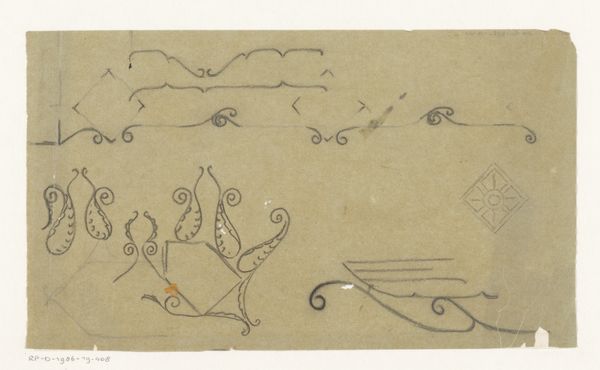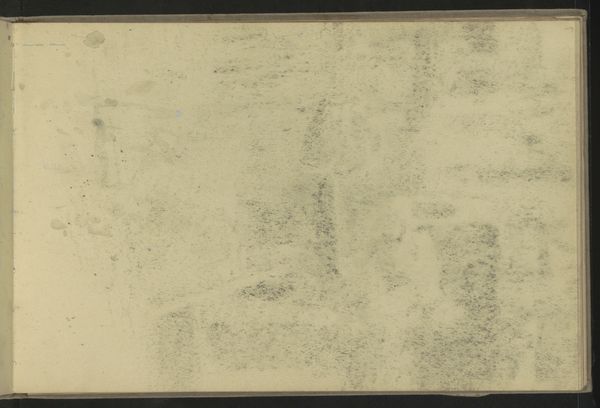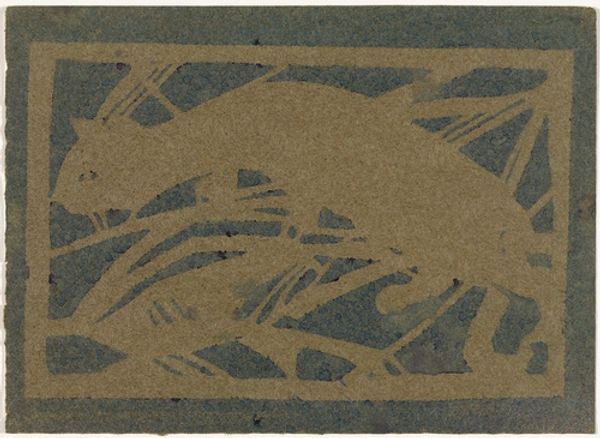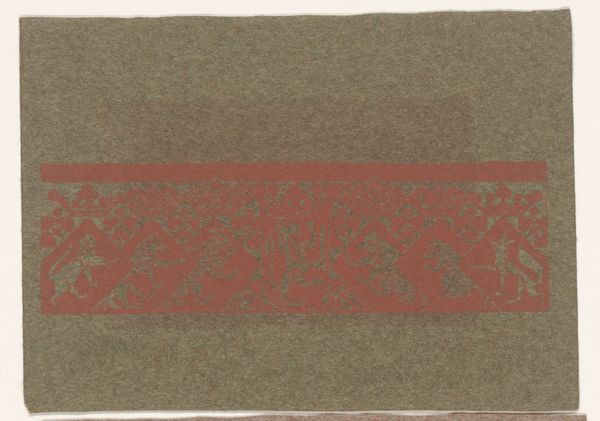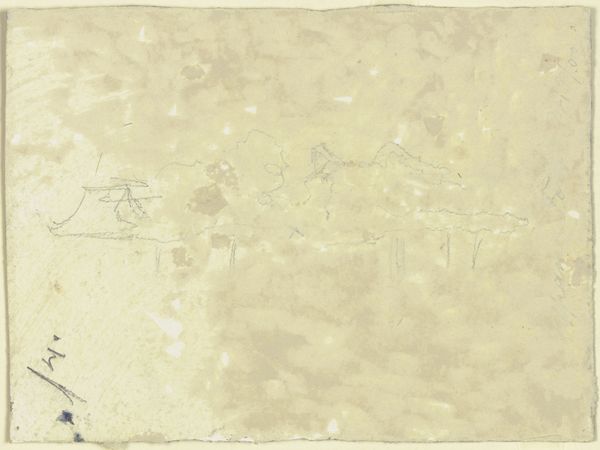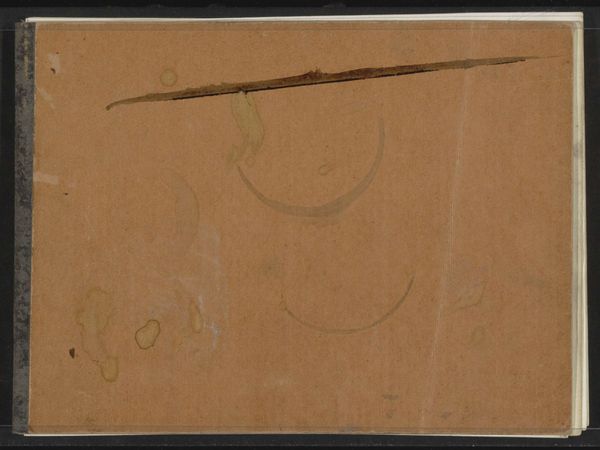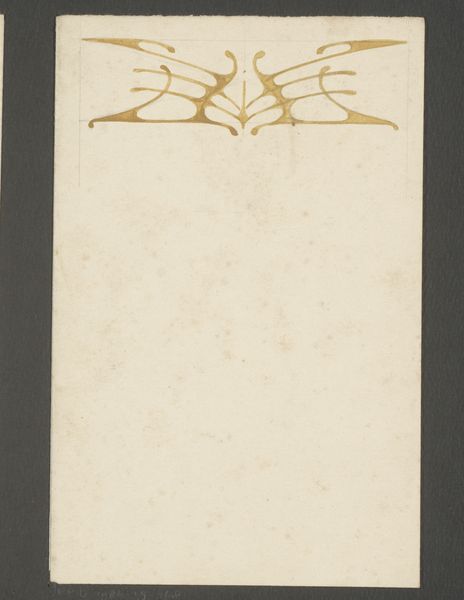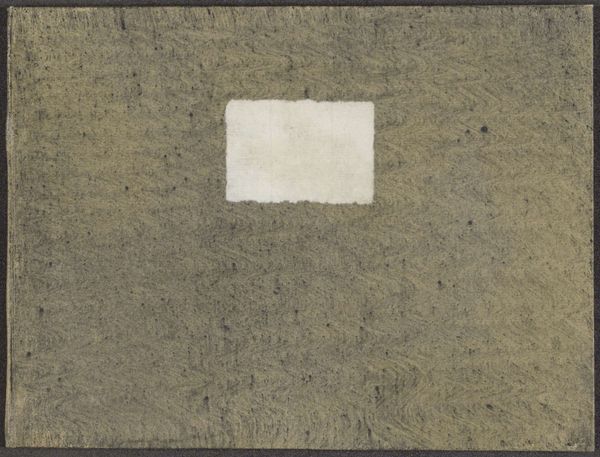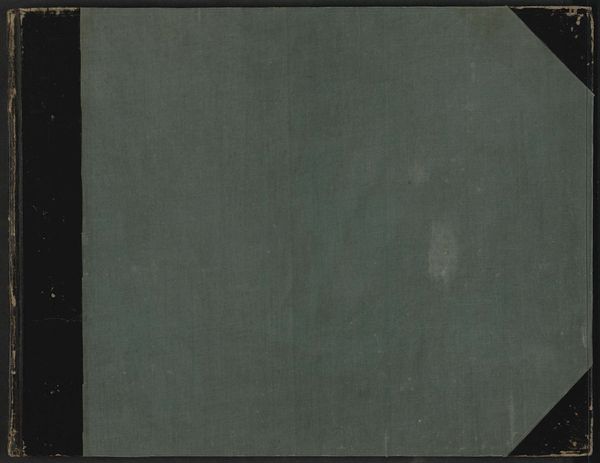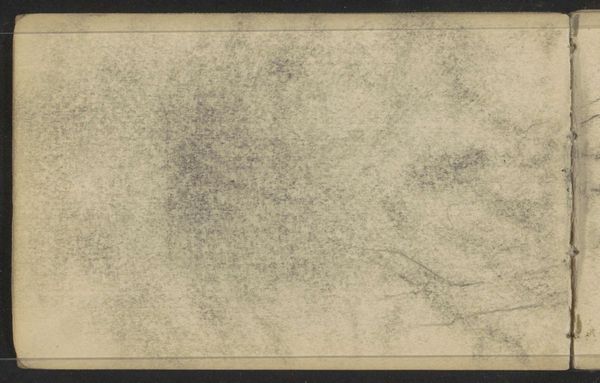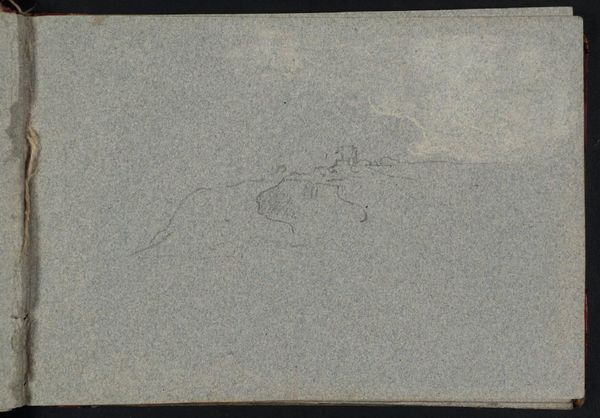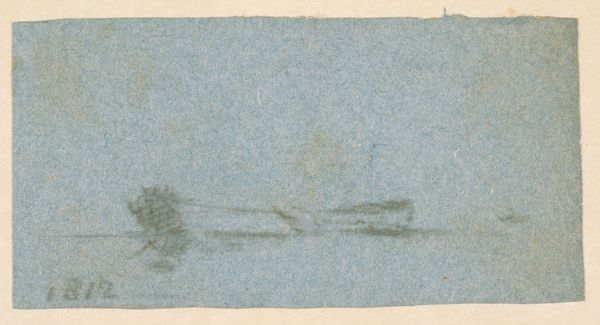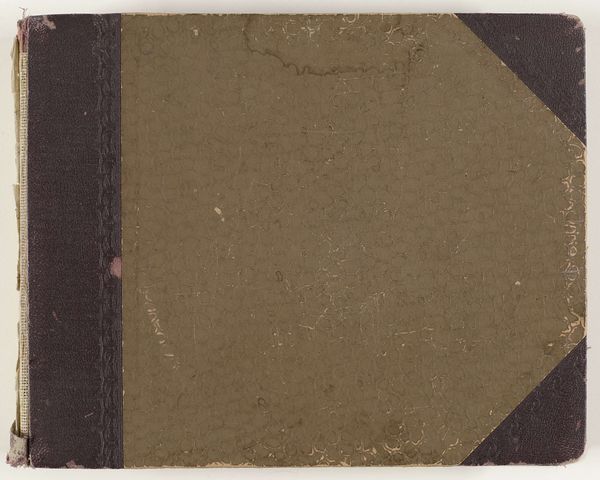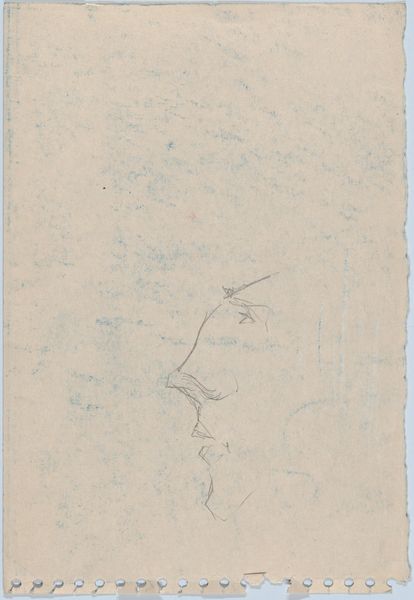
drawing, paper
#
drawing
#
asian-art
#
paper
Dimensions: height 240 mm, width 352 mm
Copyright: Rijks Museum: Open Domain
Curator: Welcome. We are standing before "Duizend grassen, deel 1" by Kamisaka Sekka, dating from before 1903. It is currently held in the collection of the Rijksmuseum. Editor: It has such a ghostly presence. The minimalist design evokes a tranquil and almost otherworldly feeling, as if glimpsing a forgotten dream. What materials did Sekka use? Curator: Sekka executed this work as a drawing on paper. Its muted tones, combined with delicate lines, gives it a fragile quality. But beyond the visible artwork, it’s worth remembering that prints were produced through a labor-intensive, collaborative workshop system. How was this distributed, sold, and received? These questions ground it firmly in the economic realities of the era. Editor: The use of empty space is striking—it guides your eye and brings attention to what *is* there: the simple rectangle dividing the page. Is there an intended significance for the position of each abstract object—a certain balance to this aesthetic experience? Curator: Possibly. From a materialist perspective, however, we also need to remember paper-making traditions and the economic structures and networks that produced, marketed, and ultimately placed that very same material within Sekka’s reach. He also innovatively employed sophisticated printing techniques like embossing to represent various textures and shading which enhanced its artistry. Editor: These barely-there textural layers…it’s not something immediately apparent but truly enriching when closely viewed! There’s the illusion of depth and a sort of subdued beauty at work here. Curator: Agreed. Looking at the materials offers more context for understanding its elegance. However, to truly assess the art in "Duizend grassen, deel 1" one needs to explore these facets, taking an interdisciplinary look at the social framework it existed within, even including cultural meaning assigned by original consumers. Editor: Both valid considerations. By attending to formal aspects and understanding artistic, cultural, and material contexts, it has expanded our understanding of Kamisaka Sekka’s captivating print. Curator: Absolutely. It provides another important aspect into how it reflects Japanese aesthetic at this point in history and hopefully will add a richer interpretation.
Comments
No comments
Be the first to comment and join the conversation on the ultimate creative platform.
